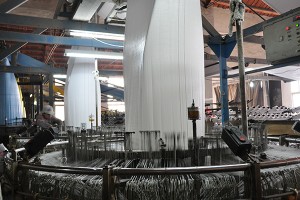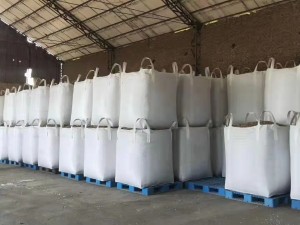FIBC bags, also known as big bags or bulk bags, are a popular choice for transporting and storing a wide range of materials, including grains, chemicals, and construction materials. These flexible intermediate bulk containers are designed to hold large quantities of goods and are known for their strength, durability, and versatility. However, using FIBC bags effectively requires proper handling and understanding of their capabilities. In this article, we will explore how to use FIBC bags to their full potential.
1. Choosing the Right Type of FIBC Bag
Before using FIBC bags, it’s essential to select the right type for your specific needs. There are various types of FIBC bags available, including standard bulk bags, conductive bags for flammable materials, and food-grade bags for storing edible products. Consider the material you intend to transport or store, as well as any specific requirements such as static protection or UV resistance. Choosing the appropriate FIBC bag will ensure the safe and efficient handling of your materials.
2. Inspecting the FIBC Bag
Before use, it’s crucial to inspect the FIBC bag for any signs of damage or wear. Check for tears, punctures, or loose threads that could compromise the bag’s integrity. Additionally, ensure that the lifting loops and seams are in good condition. Any damage to the FIBC bag could lead to product spillage or compromise the safety of handling. By conducting a thorough inspection, you can identify and address any issues before they escalate.
3. Proper Filling and Discharging
When filling an FIBC bag, it’s important to distribute the material evenly to maintain stability and balance. Overfilling the bag can lead to strain on the fabric and lifting loops, potentially causing damage. Similarly, when discharging the contents, follow the manufacturer’s guidelines to ensure a controlled and safe release of the material. Proper filling and discharging procedures are essential for maintaining the structural integrity of the FIBC bag.
4. Handling and Transportation
Handling FIBC bags requires careful consideration of weight limits and lifting techniques. Ensure that the lifting equipment used is suitable for the weight of the filled bag and that the lifting loops are securely attached. When transporting FIBC bags, secure them properly to prevent shifting or tipping during transit. Additionally, be mindful of any sharp edges or abrasive surfaces that could damage the bag during handling and transportation.
5. Storage and Reusability
Proper storage of FIBC bags is essential for preserving their quality and longevity. Store the bags in a clean, dry area away from direct sunlight and moisture. When not in use, FIBC bags should be properly folded and stored to prevent unnecessary wear and tear. Additionally, consider the reusability of FIBC bags. Many FIBC bags are designed for multiple uses, provided they are well-maintained and free from damage.
In conclusion, FIBC bags are a versatile and efficient solution for transporting and storing bulk materials. By understanding how to use them effectively, including choosing the right type, inspecting for damage, following proper filling and discharging procedures, handling and transporting with care, and ensuring proper storage and reusability, you can maximize the benefits of FIBC bags while maintaining safety and quality standards. With the right knowledge and practices, FIBC bags can be a valuable asset in various industries.
Post time: Mar-14-2024



